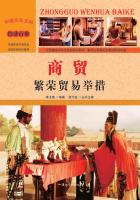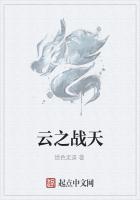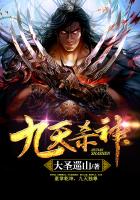According to evidence obtained from Asian agriculture (see chapters 3 and 4, section A of this chapter, and Appendix B), we find no notable difference in input intensities among farms with different land tenure arrangements under unrestrained private property rights. But, as is shown in columns 7 and 8 in table 2, under the share restriction in 1951, farming population (admittedly a rough measure of labor input) per unit of land was 47 percent higher in tenant farms than in owner farms.[2] And this does not include increases in other tenant inputs as discerned. The significantly higher labor-land ratio in tenant farms than in owner farms implies that the marginal product of land in tenant farms was higher, and the marginal product of tenant labor was lower, than similar resources employed elsewhere.
Their second line of argument rests on the so-called ability to invest. A higher tenant income under the share restriction, they claim, allowed the tenant a greater ability to invest, which led to higher investment in farming and more efficient resource use. If investment in farming yields returns at a rate higher than the interest rate, however, incremental investments will be committed by either the landowner or the tenant. For example, if more costly (effective) fertilizers led to a higher rental annuity, they would have been used without rental share control. The claim of insufficient investment owing to low income of the tenant ignores the possibilities of borrowing through the market,[3] and that the landowner may invest in land and raise the rental percentage.
The period 1949-51 reportedly had the highest interest rates on record in Taiwan.[4] The prevailing inflation does not seem to explain fully why these rates were considerably higher than those of later years.[5] In the same period, the greatest increase in tenant farming intensity was recorded. These seemingly contradictory phenomena (since the existing political instability and high interest rates tend to discourage investment) are consistent with our hypothesis of increased farming intensity. Finally, an increase in investment does not necessarily imply more efficient resource use. The rate of interest measures the alternative rate of return, and efficient allocation requires the equalization of marginal returns everywhere.
However, "the interest rates charged by these banks are uniformly regulated by the government, which are much lower than the prevailing rates in local money markets,…rice merchants were not all benefitted… because most of them could hardly obtain the needed credit from the banks."
[1]. See sources cited in chapter 1, section B.
[2]. This is obtained by dividing the reciprocal of 0.155 by the reciprocal of 0.228 and subtracting one. It is interesting to note that to support their argument, Chinese writers emphasized only the increased tenant inputs. The year 1951 perhaps yields a better approximation than 1949 and 1950, since in 1951 part of the public-tenant lands was sold to tenants (recall that a small portion of the tenant lands was under state ownership). The labor-land ratio in tenant farms would be slightly higher if the unaffected tenant farms were transferred to column 7. On the other hand, a small margin should be allowed for more intensive tenant farming, since a greater portion of paddy fields were under tenancy (see table 4 in chapter 8).
[3]. See Irving Fisher, The Theory of Interest (New York: Macmillan Co., 1930); and Jack Hirshleifer, "On the Theory of Optimal Investment Decision,"Journal of Political Economy (August, 1958).
[4]. See S. M. Yeh, Rice Marketing in Taiwan (Taipei: JCRR, 1955), pp. 73-74. The commercial bank rate of interest was about 4 percent per month.
However,"the interest rates charged by these banks are uniformly regulated by the government,which are much lower than prevailing rates in local money markets,...rice merchants were not all benefitted ...because most of them could hardly obtain the needed credit from the banks."
[5]. As was seen in the preceding footnote, the money rate of interest during 1949-51 was in the neighborhood of 50 percent per year, as compared to around 20 percent after 1953. For two reasons one is led to believe that the real rate of interest was also higher during 1949-51. First, after the issuance of a new currency in 1949, the rise in the price of rice in 1950-51 had been less than 15 percent. Thus the anticipated rate of inflation would have had to be considerably higher than the actual rate to iron out the differences in real interest rates compared with later years. Second, inflation continued in Taiwan, though at a lower rate, well after 1953.
8.Patterns of Crop Choice, Hectare Yields and Marginal Productivities Implied by Increased Farming Intensity
Under the share restriction, recall, the hypothesis of increased farming intensity states that there exists a tendency toward the maximization of gross crop value per unit of land per period of time. Since different values are associated with different crops, and since different physical attributes of crops require different input intensities for their cultivation, certain patterns of crop choice are implied. That is, with the added constraint on rental sharing, there exist predictable pattern changes in crop plantations. The conformity of the observed behavior of various crop yields to the predicted patterns of crop choice in turn renders evidence confirming that in tenant farms the marginal product of land had increased-and the marginal products of tenant inputs had decreased —under the share restriction.
In this chapter, therefore, I shall try to do two things. One is to detect patterns of crop choice in Taiwan under the share restriction. Another is to relate the associated changes in the observable average crop acre yields to the implied changes in marginal products of farming inputs.[1]
A.The Measurement
Let me begin by clarifying the meaning of some terms which I shall employ.
Cultivated Land and Crop Area















